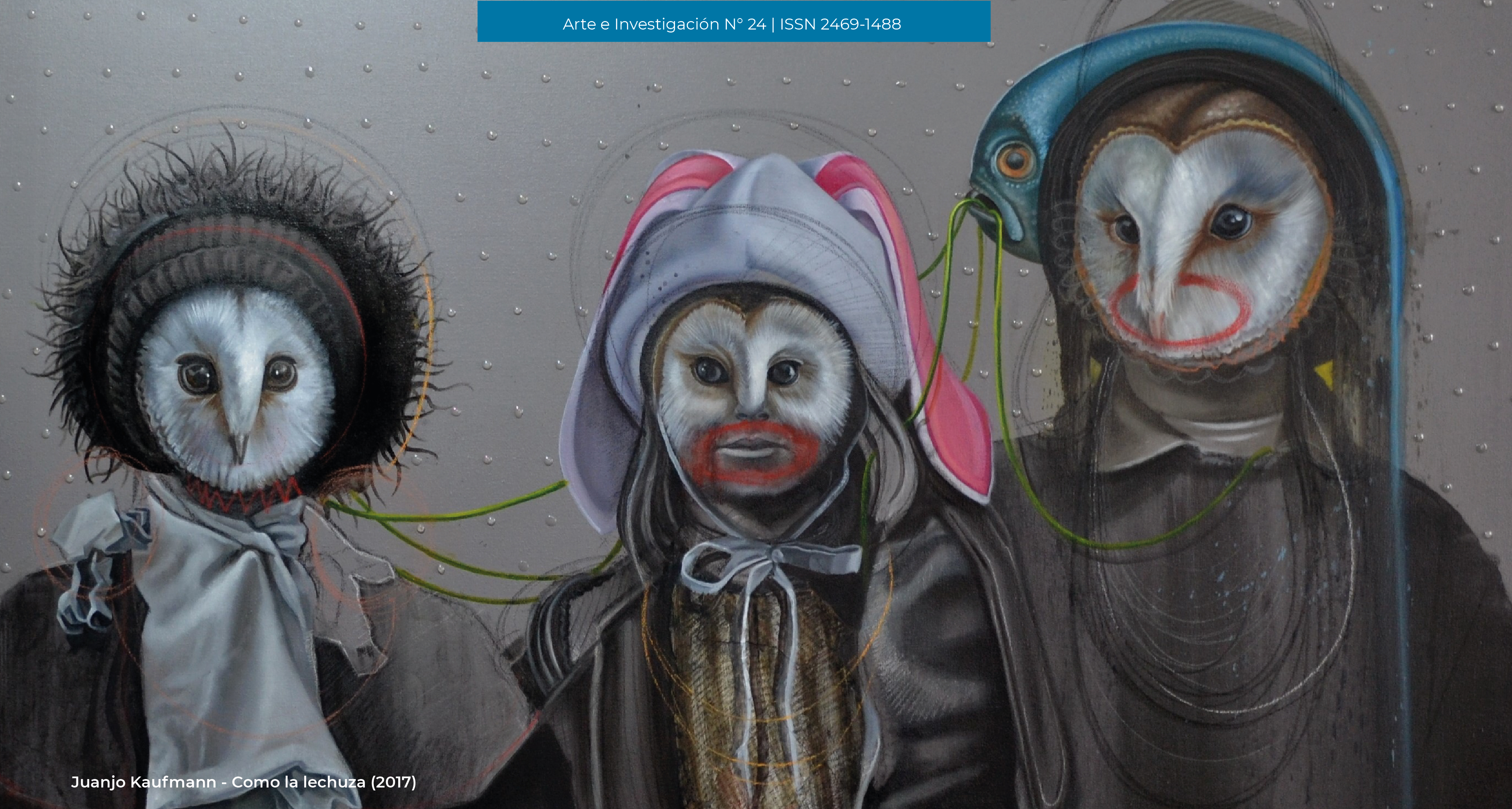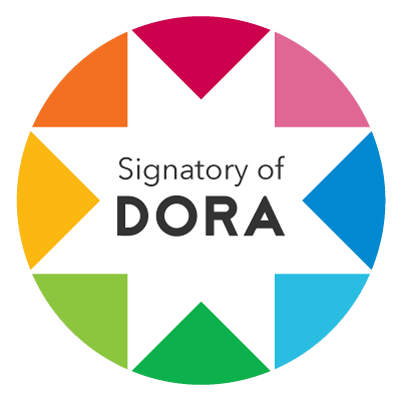Dark Academia: The Aestheticization of Knowledge
A Trend as A Symptom of Hypermodernity, Eurocentrism and Nostalgia
DOI:
https://doi.org/10.24215/24691488e102Keywords:
Sociology of Trends, Contemporary Culture, Aesthetic, Knowledge, Dark AcademiaAbstract
Aesthetics have recently become popular on social media such as TikTok and Instagram, and more specifically those that evoke lifestyles of the past. This article addresses the Dark Academy aesthetic as a relevant case of this phenomenon, whose particularity is that it is a trend that offers an aesthetic representation of knowledge. The focus of this research is the relationship between this trend and other phenomena of contemporary society. Thus, a link is established between the Dark Academy and retrospective culture, hypermodernity and the persistence of Eurocentrism in Western thought, so that it is possible to carry out a detailed understanding of the way in which knowledge is aestheticized.Downloads
References
Andrew, S. (29 de enero de 2022). A guide to ‘Dark academia,’ the TikTok-popular aesthetic with preppy style and an intellectual focus [Una guía para la ‘Dark academia’, la popular estética de TikTok con estilo preppy y enfoque intelectual]. CNN. https:// edition.cnn.com/style/article/dark-academia-tiktok-aesthetic-cec/index.html
Bateman, K. (30 de agosto de 2020). Academia Lives — on TikTok [La academia vive — en TikTok]. The New York Times. https://www.nytimes.com/2020/06/30/style/darkacademia-tiktok.html
Bauman, Z. (2017). Retrotopia. Polity Press.
Blumer, H. (1969). Fashion: From Class Differentiation to Collective Selection [Moda: de la diferenciación de clases a la selección colectiva]. The Sociological Quarterly, 10(3), 275-291. https://doi.org/10.1111/j.1533-8525.1969.tb01292.x
Brinkhof, T. (22 de enero de 2022). What is «Dark academia» and why is it trending on social media in 2022? [¿Qué es «Dark Academia» y por qué es tendencia en redes sociales en 2022?]. Big Think. https://bigthink.com/high-culture/dark-academia/
Burke, P. (2002). Historia social del conocimiento. De Gutenberg a Diderot. Paidós.
De Sousa Santos, B. (2011). Epistemologías del sur. Utopía y Praxis Latinoamericana. 16(54), 17-39.
Erner, G. (2010). Sociología de las tendencias. Gustavo Gili.
Fisher, M. (2017). Realismo capitalista. ¿No hay alternativa?. Caja Negra.
Fisher, M. (2018). Los fantasmas de mi vida. Escritos sobre depresión, hauntología y futuros perdidos. Caja Negra.
Goffman, E. (2001). La presentación de la persona en la vida cotidiana. Amorrortu.
Horgan, A. (19 de diciembre de 2021). The «Dark academia» Subculture Offers a Fantasy Alternative to the Neoliberal University [La subcultura «Dark academia» ofrece una alternativa de fantasía a la universidad neoliberal]. Jacobin. https://jacobin.com/2021/12/instagram-tumblr-humanities-romanticism-old-money-uk
Instagram. (31 de diciembre de 2021). The 2022 Instagram Trend Report. https://about.instagram.com/blog/announcements/instagram-trends-2022
Jameson, F. (1995). La estética geopolítica. Cine y espacio en el sistema mundial. Paidós.
Kennedy, M. (2020). ‘If the rise of the TikTok dance and e-girl aesthetic has taught us anything, it’s that teenage girls rule the internet right now’: TikTok celebrity, girls and the Coronavirus crisis [‘Si algo nos ha enseñado la emergencia de los bailes de TikTok y la estética e-girl es que las adolescentes gobiernan internet en estos momentos’: Celebridad de TikTok, chicas y la crisis del coronavirus]. European Journal of Cultural Studies, 23(6), 1069–1076. https://doi.org/10.1177/1367549420945341
Lipovetsky, G. (2018). Los tiempos hipermodernos. Anagrama.
Lipovetsky, G. (1996). El imperio de lo efímero. La moda y su destino en las sociedades modernas. Anagrama.
Lores, A. (21 de marzo de 2022). Coquette Aesthetic: la tendencia que arrasa en TikTok y que mezcla evasión, historicismo y feminidad impostada. Vogue. https://www.vogue.es/moda/articulos/coquette-aesthetic-tendencia-tiktok
Maguire, L. (30 de diciembre de 2020). From TikTok to Depop: Fashion’s new trend funnel [De TikTok a Depop: el nuevo embudo de tendencias de la moda]. Vogue Business. https://www.voguebusiness.com/fashion/from-tiktok-to-depop-fashions-new-trend-funnel
Mejías, U., y Couldry, N. (2019). Colonialismo de datos: repensando la relación de los datos masivos con el sujeto contemporáneo. Virtualis, 10(18), 78–97. https://doi.org/10.2123/virtualis.v10i18.289
Milan, S., y Treré, E. (2019). Big Data from the South(s): Beyond Data Universalism [Big Data desde el sur: Más allá del universalismo de datos]. Television & New Media, 20(4), 319-335. https://doi.org/10.1177/1527476419837739
Pierce, A. P. (2022). The Rise of Bimbo TikTok. Digital Sociality, Postfeminism, and Disidentificatory Subjects [El ascenso de la Bimbo de TikTok. Sociabilidad digital, posfeminismo y sujetos desidentificatorios]. En T. Krijnen et al. (eds.), Identities and Intimacies on Social Media. Transnational Perspectives (pp. 201-215). Routledge. https://dx.doi.org/10.4324/9781003250982-16
Srnicek, N. (2018). Capitalismo de plataformas. Caja Negra.
Soto, H. M. (2022). Estéticas en Tik Tok: entre lo digital y lo histórico. Cuadernos Del Centro De Estudios De Diseño Y Comunicación, (152), 199-209. https://doi.org/10.18682/cdc.vi152.6688
Spellings, S. (25 de mayo de 2021). Do I have an Aesthetic? [¿Tengo una estética?]. Vogue. https://www.vogue.com/article/do-i-have-an-aesthetic
Tanner, G. (2022a). Las horas han perdido su reloj. Las políticas de la nostalgia. Alpha Decay.
Tanner, G. (2022b). Un cadáver balbuceante. El Vaporwave y los fantasmas electrónicos. Holobionte.
Zuboff, S. (2019). The Age of Surveillance Capitalism: The Fight for a Human Future at the New Frontier of Power [La era del capitalismo de la vigilancia la lucha por un futuro humano frente a las nuevas fronteras del poder]. Profile Books.
Downloads
Published
How to Cite
Issue
Section
License

This work is licensed under a Creative Commons Attribution-NonCommercial-ShareAlike 4.0 International License.
The acceptance of the manuscript by the magazine means the non-exclusive cession of the property rights of the authors in favour of the editor, who allows the reuse, after publication (post print), under a license Attribution-NonCommercial-NoDerivatives 4.0 International. According to these terms, the material can be copied and redistributed by any means or in any format as long as a) the author and original source of the publication are quoted (magazine and URL of the work), access to the license is provided and whether changes have been made is mentioned; and b) the material is not used for commercial purposes.
The cession of non-exclusive rights means that after the publication (post print) in Arte e Investigación the authors can publish their work in any language, means and format; in such cases it must be mentioned that the material was originally published in this magazine. Such cession also means the authorization of the authors for the work to be collected by SEDICI, the institutional archive of the National University of La Plata, and to be spread in the databases that the editorial team considers appropriate to increase the visibility of the publication and its authors.
Moreover, the magazine encourages the authors to deposit their productions in other institutional and thematic archives under the principle that offering the society the scientific and academic production without any restrictions contributes to a greater exchange of the global knowledge.


































